
Gilsonite Usage
According to its exclusive chemical and physical feature, Gilsonite used in more than 163 products, e.g;
- Mixing with Asphalt
- Mixing with Bitumen
- Construction
- Printing ink
- Roofing felt
- Paint and coat
- Cementing
- Foundry
- Foundry sand additive
- Steel creating additives
- Oil base drilling

1- Mixing with Asphalt
Glance Pitch and Graliamite are natural hydrocarbon materials with a high softening point (above 110° C) known as asphalt. They are sold in their native state after extraction.
They are added to asphalt to harden and strengthen it because they are compatible with asphalt. Gilsonite is used around the world as asphalt modifier in the form of a dry bulk solid granular powder.
Gilsonite has many advantageous for asphalt pavements such as: increases its stability, make it resistant to deformation (e.g: rutting and shoving), prevent water penetration and It makes it more capable of withstanding loads. Adding Gilsonite to asphalt increases the adhesion of aggregates to asphalt. It is also makes the pavements harder and stronger.
People believe that Gilsonite makes pavements prone to heat cracking by reducing pavements’ low temperature properties. Adding melted Gilsonite to hot asphalt will reduce penetration and increase viscosity of the asphalt binder. It is also being mixed with aggregate before mixing with asphalt adhesive.
Using Gilsonite in asphalt pavements has successful result, especially in highly stressed traffic areas. Gilsonite is the main material of virgin polymers e.g: styrene – butadiene – styrene (SBS) and Ethyl Vinyl Acetate (EVA). Gilsonite modified asphalt binders generally do not increase asphalt binder content requirement in pavement mixtures.
Asphalt binders and pavement mixtures were finally graded with “FHWA” research in March of 1993. Experimental criteria based on engineering properties in pavement and asphalt binder specifications were extended by Strategic Highway Research Program, “SHRP”. Low temperature performance has been emphasized for old binder materials.
The flexibility of the old asphalt binder was significantly increased. The predicted performance of asphalt binder at high and low temperature is called Performance Grade, “PG”. Under “SHRP” evaluation, neither Gilsonite nor post vulcanized crumb rubber have performed well. Because transport departments want “PG” specifications, demand for modified asphalt will increase according to “SHARP” specifications.
Due to at least three factors using bitumen (asphalt) compositions in preparing aggregate compositions as road paving material imposes a serious challenge to providing an acceptable product. The first is to have special specifications so that the bitumen is useful for road payment.
State and federal agencies issue lists of required specifications for different bitumen application such as using bitumen in road pavement. Bitumen that has parameters related to viscosity, toughness, tenacity and ductility is needed by Federal Highway Administration.
These parameters have critical properties in bitumen compositions, if one of these properties isn’t present in the composition, that combination will not be suitable for road paving. Not all sufficient specifications for road construction can be met by ordinary bitumen and may be accompanied by damages such as permanent deformation, thermally induced cracking and flexural fatigue and … .
These damages reduce the life of asphalt roads. So, we can improve the properties of ordinary bitumens by adding materials such as polymers and asphaltites like Gilsonite. They are used to improve this performance of asphalt mixtures.
Mixtures containing Gilsonite achieve higher performance grades (PG) and also and incorporate into an asphalt blend with no need for high shear mulling as in the case with some other modifiers. We can replace SBS (styrene-butadiene- styrene) polymers in whole or in part in the presence of Gilsonite. Modified asphalts are more stable and resistant to water, deformed fewer and less sensitive to temperature than unmodified asphalts. The problem with using Gilsonite is that it is solid and cannot be easily used in viscous bitumen
2- Mixing with Bitumen
This is almost a simple method. A bitumen tank with a propeller stirrer is needed to stir and create vortex. The best offer is a “lightning” mixer or other electrical mixers. An explosion-proof motor should be used when large dust is likely to occur. Gilsonite should be added slowly at the vortex. Again, the bitumen must be rotated through recirculation piping. We should observe temperature limits. The minimum temperature should be about 170 to 175° C. Anything significantly less than this will extend mixing time. After adding ingredients, it is enough to mix for 2-4 hours, for typical (5-10%) substitution concentrations. In the main concentrations (over 10% Gilsonite), an additional mixing is preferred.
When the bitumen cannot be heated higher than 170°C, we should add Selects other Grade (60 mesh) or Selects Grade (200mesh) rather than HMA Modifier Grade (175°C softening point) for modification. Although, each one of these selects grades will need a little.
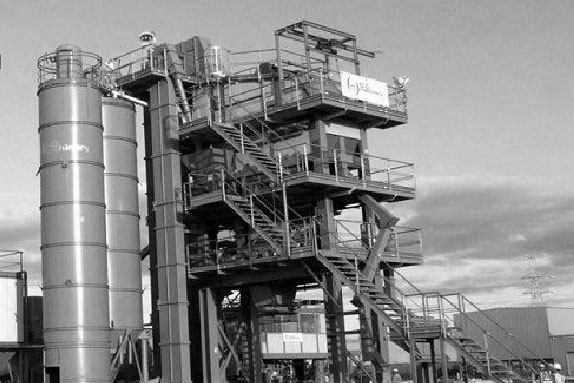
Gilsonite can be sprayed into a blender after storage in an additional silo at the pug mill. Spraying of dry mineral (ground limestone) silos on mixture is done in Iran as Gilsonite is used. A screw feeder or vane feeder is calibrated at each level to measure the level of Gilsonite. In the end, all that remains in the silo is Gilsonite powder, which is easy to remove.
More Gilsonite is added to achieve HMA Modifier grade in making bitumen. We need to gently add dry Gilsonite powder to the hot bitumen. If we add them quickly, the powders may be conglobate. But if this happens, manual handling must also be done.
While using a cylindrical and horizontal tank Gilsonite should be added at an opening at the top (about 0.5-1.0 meters in diameter). We have to stir it with a propeller mixer or a manual paddle so that the powders may not be conglobate. To ensure some agitation effect and proper dissolving using Recirculation piping is necessary.
Frequent and continuous stirring is required to achieve proper dissolution. Mixing Gilsonite-modified bitumen in horizontal tanks should be from the front to the back of the tank or vice versa. Even if some re-plumbing of the tank is necessary, this should be done. Gilsonite does not dissolve quickly. It takes 2-4 hours to mix 10-15 tons of bitumen with 5% Gilsonite. It must also be mixed for an additional 2-4 hours. Higher doses of Gilsonite require more time to mix.
There is no evidence of the solubility of Gilsonite in bitumen. However, if it is not solved, the large pieces of Gilsonite will float in the bitumen and be seen.
By comparing the main and final amount of bitumen penetration, we can find out the solubility of Gilsonite in bitumen.
Batch Plant (Pug Mill) Mixing
During the dry cycle of the mixing procedure, Gilsonite should be added onto the hot aggregate rocks, before the bitumen is added. It is better to keep the cycle working for a further 15 seconds to have suitable dissolution.
Eagle petrochemical Company found that 5 seconds more dry mixing and 10 seconds more wet mixing will maximized the Marshall Stability of the paving mix.
Gilsonite can be sprayed into a blender after storage in an additional silo at the pug mill. Spraying of dry mineral (ground limestone) silos on mixture is done in Iran as Gilsonite is used. A screw feeder or vane feeder is calibrated at each level to measure the level of Gilsonite. In the end, all that remains in the silo is Gilsonite powder, which is easy to remove.

Meltable Bags
It is easier to pack Gilsonite in small polyethylene bags and pour it on hot aggregate in a batch plant. The sidewall thickness of the bag should be about 2 mils (0.005 cm). The aggregate temperature should be around 180°C. This is the melting temperature of the bags and Gilsonite, not the heat of the bitumen. Temperature of 150-165°C entering the pug mill is suitable, as long as the aggregate heated enough.
Increase mixing time by 15 seconds if spraying Gilsonite onto aggregate or dropping bags into the pug mill. This will dissolve the Gilsonite in the bitumen better. We can scoop precise number of kilos of Gilsonite per batch onto the hot aggregate, manually and without the need for packaging.
Continuous Plant (Drum) Mixing
By screw auger, Gilsonite may introduce. Gilsonite should be added to the drum where bitumen is added. A driver motor should control the crew auger; the motor is calibrated to the plant’s production rate. At the opposite end from the flame, the auger should enter the drum. Gilsonite should not enter the bag house and get stuck in the air stream. To mix Gilsonite with aggregates it should be added right under the bitumen output so that it can take down by bitumen and mixed.
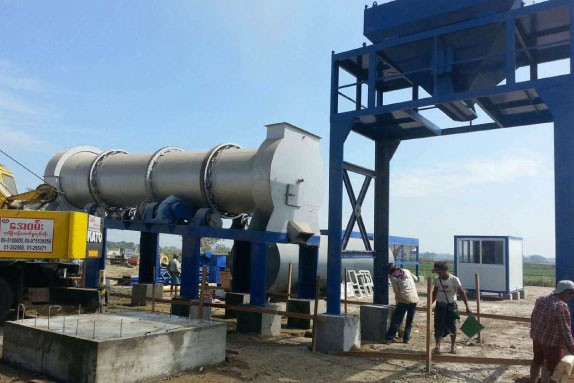

Paving Procedures
Eagle Petrochemical Company does not recommend paving with Gilsonite because in pavements, Gilsonite resin has been added to the paving mixture. In Gilsonite modified bitumens, permeability is extremely low, viscosity is increased and softening point is slightly increased. Gilsonite-modified paving stones are very durable and easy to apply.
We commend normal paving procedures and normal lay-down temperatures. We recommend the contractor operates at the higher end of his normal operating lay-down temperature range if the increase in viscosity causes a problem. Modified mixtures with Gilsonite are easier to adjust in cold weather, (5 to 10°C).
In this situation, the initial roller may follow the paver a little closer and the final roller may not have to stay back as far.
Construction
The study of asphalt properties has been done to improve the pavement characteristics. Asphalt properties are manipulated to achieve properties such as good wear, corrosion resistance, fatigue and cracking resistance at low temperatures, adhesion strength, viscosity and pour point. Groove resistance is the resistance of asphalt against wheel groove pressure.
Adhesion strength is the maximum tolerance of the joint and the tank against splitting, but is not limited to the space of the bond and aggregate.

Push resistance in traffic enters the pavement, which means permanent and longitudinal displacement of a local area of the pavement surface. We can extract these products from natural asphalt (Gilsonite) without any restrictions: hale asphalt, bottoms from a solvent DE asphalting process, hard asphalt, blown asphalt, stiff refined asphalt. The raw and base material in binder and primer is asphalt.
We can use asphalt, fibers (including but not limited to, mineral or cellulose), processing agent (including but not limited to, oligiomeric wax, carboxylate, derivative of oligiomeric wax, or low molecular weight polyolefin), polymeric or elastomeric additive, or asphalt-derived as a Primer.
Melted aggregate is a primer. Polymer-free asphalts are known as “neat”.

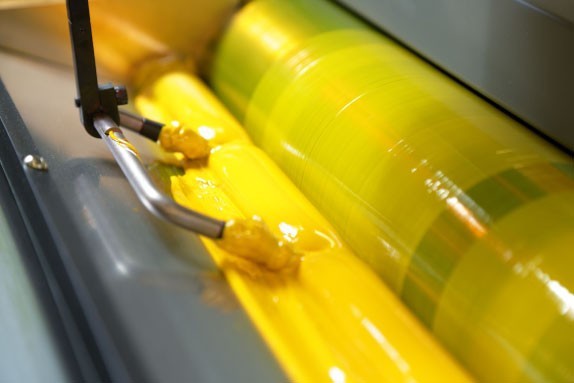
3- Printing ink
Modified resins, called “ER resin” or “Gilsonite ER resin”, mean the uintaite-free part . To produce pure uintaite, dissolving it in solvent (i.e., a solvent that dissolves greater than about 90% of the uintaite) as well as filtering it alone is not enough. These fractions are significantly enriched in maltenes or asphaltites relative to natural uintaite.
This simple filtration process does not greatly shift the asphaltites to maltene ratio from that of natural uintaite. Aphaltene-enriched and maltene-enriched cannot be produced from this useful uintaite.
The fraction of uintaite that is dissolved when finely ground uintaite is contacted with 20 volumes of hot heptane at 80 solutions is filtered through a 0.8 micron filter, is called “maltene” as used herein.
Parts enriched with uintaite have 6 times more maltenes than asphalt e.g. (ER-140 and ER-115). These resins are significantly free of asphaltenes i.e., less than 2 wt. % asphaltenes, Also, these resins are just as ash-free.
As you read, ER resins have about 140 more softening points than natural uintaite. Natural uintaite has at least 50% many asphaltenes than ER resins. (Asphaltenes may be between 75%-90% fewer). Maltene-enriched resins contain insoluble materials derived from ash. These insoluble are below 0.1% by weight (It is better to be less than 0.05 %.) The maltene-enriched fractions of uintaite useful in this invention comprise at least 60% maltenes (maltene may be between at least 60%-90%).
Softening point of maltene-enriched ER was lower than those of natural uintaite. Solution viscosity, viscosity stability and melt viscosity is improved relative to the existing degrees of natural uintaite. We are also called the less soluble, high melting, asphaltenes-enriched fractions; ER resins.
4- Roofing felt
The thing known as Gilsonite or Intahite is a comparatively new hydrocarbon product, the nature of which is explained in an article by Locke, appearing in the Transactions of American Institute of Mining Engineers, (Vol. 16, and page 162 ). As stated in the article, Gilsonite is a material with superior properties in roofing. That’s why I want to come up with a useful combination of this substance in my invention. It cannot be used alone in roofing or paving because it is very fragile, moreover, not adapted for use as a base which can be tempered down to the proper consistency. Combines asphalt, oil and Gilsonite to create a supple, flexible material that I recommend. I propose to combine Gilsonite with Asphaltum and a suitable oil in such a manner that the advantages of the Gilsonite as an ingredient of a roofing composition can be had, the Asphaltum supplying the deficiencies ape-‘ parent when the Gilsonite is used alone, and I am thus’ enabled to procure a mixture that possesses elastic and pliable properties such. These roofing sheets that I suggested are very durable and at the same time have the required commercial features.
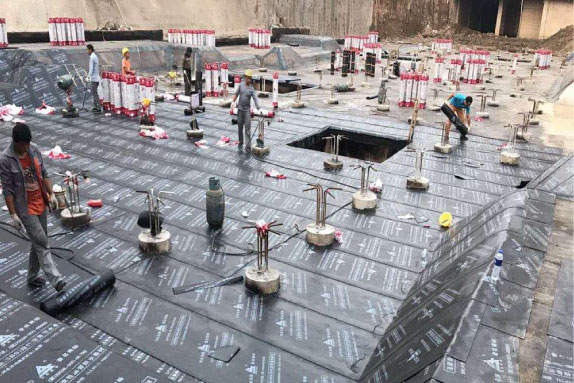

5- Paint and coat
There are other combinations for art works that have very favorable economic characteristics. These materials are compatible with other materials used in paints, varnishes and glazes in the dust industry. At the same time, they are very resistant to acidic and alkaline materials and are not corrosive to the surface applied to them. These materials are resistant to water and They are air resistant and have good electrical insulation. But we have a composition that has all these properties in one place. The composition contains Gilsonite is the main component. For example, combining Gilsonite and drying oil is one of these compounds that have significant desirable properties. Gilsonite, which is one of the purest bitumens available, is used in the manufacture of black varnishes, coach varnishes, black baking enamels, japeries, insulating compositions and water-proofing compositions.
The only two commercial sources of commercial Gilsonite in the United States are in Utah. Gilsonite reserves have different properties in each mine.According to research; most of its available reserves are being depleted. Due to this, the industry is witnessing a shortage of sources of guillotine and its substitutes.
By using paint containing Gilsonite and the gas-proofed Tung or oiticica (or mixtures of the two) oil without the addition of any other drying oil, maximum water and Weather resistance is possible. Although this compound can be used commercially, it is necessary to add a viscosity reducing drying oil because it is difficult to brush. For this purpose, we can use Perilla oil.
But we can also use other drying oil e.g.: linseed, soya bean, sunflower seed, hempseed, menhaden, or sardine oil instead of the perilla oil. But Perilla oil has more drying properties than other mentioned oils. When Gilsonite is combined with Raw Tung or Oiticica oil, an unstable substance is formed, which will take on excessive body when aging, and one which is not gas-proof.
Also, when Gilsonite with Tung or oiticicaoilsis normally lubricated in heat with gum and resin, the resulting paint becomes full of check marks and deteriorates rapidly, particularly upon disclosure.
Also does not check and rot rapidly upon disclosure.
Lead, cobalt, or manganese oxide, or the like is used to control the drying time of finished paints. Thinning oils such as mineral spirits, solvent naphtha, or any good solvent may be used to achieve the desired color consistency. For this purpose this requires about 50% to 65% by weight of thinning oils.
For example 50 pounds of Gilsonite and 10 pounds of perilla oil are heated to a temperature of 400 to 450 F. It is stirred enough to achieve the desired consistency. After that forty pounds of the gas-proofed Tung or oiticica oil (or a mixture thereof) are then added and mechanically mixed until the oils and the Gilsonite are totally incorporated into homogeneous mass. Now with 50-53% of Thinning oils, we have to mix the ingredients to achieve a good consistency. We may incorporate driers at suitable percentage. Depending on the final properties of the product, the amount of ingredients can vary. For instance, the percentage of Gilsonite varies between 10 and 80% depending on the color intensity and hardness of the film. Commonly this ratio will be between 25 and 60%. In order to have a waterproof surface, we have to increase the hardness of the film and have a more reserve level, and for this, Gilsonite must be increased up to 80%.
While the lower limit of 10% for the Gilsonite is lower than will normally be used, a satisfactory and durable paint may be made With as small a proportion of Gilsonite as this by incorporating a small amount of carbon black, say 3%,; to 5% by Weight.
The percentage of nutrica oil Tung or oiticica oil can also vary, but we should know that increasing the number of these oils increases durability. Commonly, the range of tung or oiticica oils are between 25 and 50%. However, to use these gas-proofed oils, you must pay attention to the amount of Gilsonite.
Any difference in above percentages with viscosity reducing oils is compensated like perilla. If this type of oil is not available, the Tung or oiticica oil bean oils should be used to complete the base of the paint.
Iron oxide or chromium green can be used to produce attractive and long-lasting colors.
The colors invented are water and weather resistant. Also they are more resistant to acids and alkalis than paints that contain Gilsonite and drying oils except gas-proofed tung oil.
Those parts of the film that do not evaporate after the paint is applied and remain to form the paint layer are referred to as film-forming.
The above detailed description has been given for fluency of comprehension only, and no unnecessary limitations should be understood therefrom, but the added claims should be interpreted as broadly as allowed, in view of the prior art.
6- Cementing
For blocking or plugging an abandoned pipeline or back filling a mine shaft, tunnel or excavations contains Portland cement or a mixture of at least two components selected from Portland cement, A cementations slurry, formulated from the cement mix, we can use A cement produced by Gilsonite. Its density is less than 1500 kg/m3 and it has good compressive strength. Approximately half to ten times the volume of cement, Gilsonite is used in the invented formulation. Of course, this amount also depends on the application of the substance.
The lower limit is used when high strength is considered.
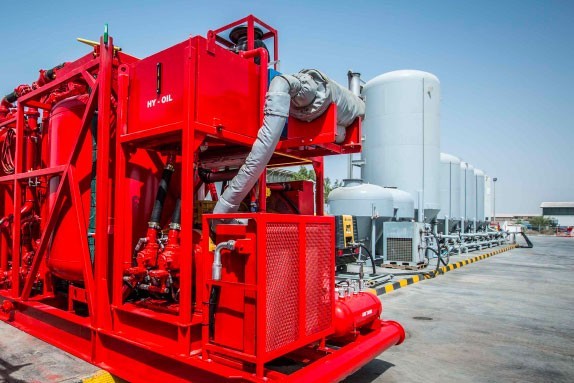
The strength and porosity-permeability characteristics of the set cement is Determined by particle size and particle size distribution of the Gilsonite.
A coarse Gilsonite Where lightest weight and lowest porosity-permeability are important and strength is to be sacrificed or is of little importance used for places where maximum strength is desirable, in this situation an aggregate of minus 50 mesh or finer (200 mesh) may be used.
There are different conditions in terms of particle size and coarseness. The above examples show the maximum capacity. The mixture must always be pump able through the system from the mixing point to the final point of placement of the cement slurry. It prevents pumping and present in the slurry if the aggregates are larger.
When the ratio of water to cement-Gilsonite) like ration of 1:4) is sufficient, cement with large aggregates is difficult to pump and blocks the system outlets, but if this mixture with small aggregates is small, this will never happen.
We add petroleum solvent to the wet or dry mix for wetting the surface of the Gilsonite particles and causing them to form an intimate bond with casing and earth formations of the bore hole. Also the amount of petroleum solvent depends on the amount of Gilsonite present.
We may pump through the casing and into the cementing area in advance of the Gilsonite-cement slurry instead of adding the solvent instantly to the mixture.
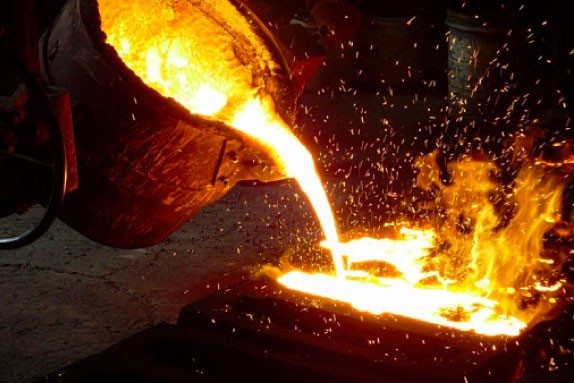
7- Foundry
Gilsonite foundry sand help:
In one case Gilsonite support foundry sand in these ways:
- It can lower the defects caused by quick reaction between the silica sand template and the oxidized area of molten iron.
- Also it improves sand skin from being casting at shakeout.
- Gilsonite help you make cleaner and flatter foundry cover.
- Lessen the Defect, foundry wastage and scarp.
While pouring, gaseous film is formed by the gas that is come from carbonaceous additives. It can prevent direct connection of molten metal with clay-coated sand seeds and also prevent the burning of sand-metal by reducing the connection between them. After the production of volatile and hydrocarbon carbonaceous materials, a layer of glossy carbon graphite precipitates in the metal-mold interface area, when heated. This deposit prevents it from being easily wetted by molten iron and prevents the formation of iron silicate as a physical barrier. This effect is to prevent burns and penetration. A mold atmosphere of reducing gases is created when the carbonaceous materials are heated. By keeping the surface of molten iron at the interface free from oxidation, this atmosphere, can prevent formation of the iron silicate necessary for penetration and burn-on. A. Burn-on: Sticking grains of sand to the casting tightly. B. Burn-off: The casting surface has a sandy appearance. C. Metal penetration: It is a mass of metal and sand that is the result of metal penetration between sand particles and is difficult to destroy in casting. D. Pin holes, which is caused by high nitrogen content.
8- Foundry sand additive
These are additive evaluated: sea coal, pitch, petroleum asphalt, Gilsonite of a “coarse” and “fine” grind, and blown asphalt. The tests included evaluating physical characteristics of recent sand mixtures at about 125th volatile at 900°F (482.2°C) and 400th compatibility. The physical properties of sand developed with non-coal carbon materials were superior to those of sea coal at significantly lower additive levels. It seems that, physical properties of density, water requirements and green, dry, baked and hot strengths are improved by mixing Gilsonite and asphalt. Increasing the fineness of grind of the Gilsonite is obtained because of an excellent greater improvement in foundry sand green. To have a higher sand cover, finer materials should be used. Improving sand wetting by the thermoplastic asphalt materials increase strength. According to the gas evolution curve, asphalt and Gilsonite reacted earlier than sea coal, but produced less gas. Gilsonite and asphalt at one third the level of sea coal has the same total volatiles at one third the sea coal additive level. According to research, casting with Gilsonite is similar to sea coal but much better than other materials. Another study with system sand confirmed the laboratory results of this research on new sand mixes with respect to sand properties and casting finish.
9- Steel creating additives
Gilsonite is one of the most widely used additives in steel production. It’s used in limestone, Lime, Magnesium, and calcium carbide additive systems. To remove impurities like sulfur, silica, and phosphorus from the molten steel and move them to the molten slag layer we should use those additives. Gilsonite plays an important role in the manufacture of steel additives.When Gilsonite is added to molten steel, additives be mixed. This is because it is 75th volatile substance at 1900°F. Therefore, chemical reactions are carried out that transfer impurities to the molten foam layer. High in lustrous carbon can formed the Iron oxide to steel in the next level. Although CO reduces most of the Fe3+ by indirect reduction, some should be reduced directly by elemental carbon. Finally Evaporated Gilsonite is converted to highly structured asphaltenes, which is almost the same as pure carbon. It can add carbon to steel.
10- Oil base drilling.
Oil based drilling fluids and development in drilling fluid mixtures are described in applicant’s co-pending application PCT CA2007/000646 filed April 18, 2007 and incorporated herein by reference. Chemistry of organ clays and primary emulsifiers for use in various applications containing oil-based drilling fluids and different compositions wherein the viscosity of the mixture may be controlled , is described by co-pending application.
In the past 50 years organophilic clays have been used as a component of the drilling fluid to assist in creating drilling fluids having properties that enhance the drilling process. For cooling and lubrication, removal of cuttings and maintaining the well under pressure to control ingress of liquid and gas, we use oil-based drilling fluids.
Oil based drilling fluids and development in drilling fluid mixtures are described in applicant’s co-pending application PCT CA2007/000646 filed April 18, 2007 and incorporated herein by reference. Chemistry of organ clays and primary emulsifiers for use in various applications containing oil-based drilling fluids and different compositions wherein the viscosity of the mixture may be controlled , is described by co-pending application.
In the past 50 years organophilic clays have been used as a component of the drilling fluid to assist in creating drilling fluids having properties that enhance the drilling process. For cooling and lubrication, removal of cuttings and maintaining the well under pressure to control ingress of liquid and gas, we use oil-based drilling fluids.
A regular oil-based drilling mud contains: an oil part (the continuous phase), a water part (the dispersed phase) and organophilic clay (hereinafter OC) which are mixed together to form a gel (also referred to as a drilling mud or oil mud). Some additives contained or dispersed into the mud such as Emulsifiers, weight agents, fluid loss additives, salts and numerous. The quality of the drilling mud is generally determined by the ability of the drilling mud to maintain viscosity and emulsion stability.
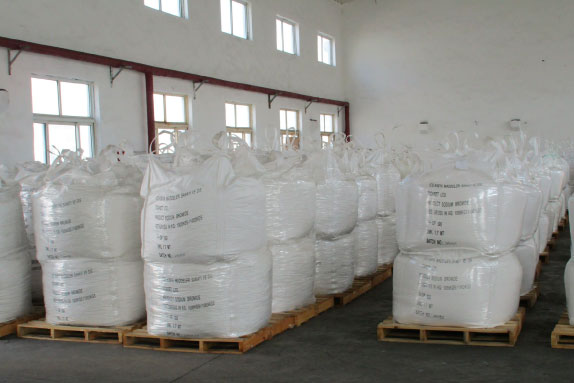
-
Fluid Loss Control
This invention connects with a mixture comprising an HPHT fluid loss control aid, steady at high temperatures and which also acts as an great shale balancer, bore hold lubricant, sealant for depleted sand, and wall cake conditioner. A surfactant such as a nonionic surfactant and a Gilsonite (asphaltites, asfaltit, Gilsonita, uintaite, natural asphalt, natural bitumen) is called the HPHT fluid loss control aid.
It is also contains a solubilized lignite such as caustic zed lignite and carbon black. HPHT is reduced by the fluid loss control aid. I is also has good durability at elevated temperatures such as at 300 °F, stabilizes troublesome shale and lowers bore hole erosion, helps seal depleted sands, reduces torque and drag, causes no harmful result on the flow properties of the properly conditioned drilling fluid, and total pit costs is lowered by the fluid loss control aid.
To achieve all the intended goals of the invention, as explained the invention comprises a composition comprising an HPHT fluid loss control aid. Its features include: Stability at high temperatures, acting as an excellent shale stabilizer, bore hole lubricant sealant (for depleted sands) and finally, wall cake conditioner.
Gilsonite, an asphaltic material or solidified hydrocarbon make the HPHT fluid loss control aid. In the Gilsonite used in this device, we also have a surfactant, in particular, a non-ionic surfactant.
HPHT filtrate loss is reduced by HPHT fluid loss control aid. It is also very stable at elevated temperatures such as at about 300 °F and sometimes as high as 400 °F, troublesome shales is stabilized by HPHT fluid loss control aid. It is also lowers bore whole erosion; helps seal depleted sands, reduces traction and torque, and causes no adverse effects on the flow properties of the drilling fluid properly conditioned. Finally and lowers total well costs.
By combining the components of the composition as well as a product made by the process of adding the composition or product to a drilling fluid, this invention is going to be built. At last, for controlling HPHT fluid loss in subterranean wells by adding the composition or product into a subterranean well we should use this invention called: The HPHT fluid loss control aid.
Drilling fluids as used in the written description and the claims contain not only bespoke drilling fluids or drilling muds including petroleum oil, synthetic oil and fresh water and salt water kinds as known in the art but also supplementation, fluids and work over fluids.
-
Confi – Trol
For HTHP filtration control in invert oil / synthetic base systems at temperatures above 400 0F (205 0C) we use a natural occurring Gilsonite.
It can be used both in the initial formulation and for treatment while drilling also it is suitable to all invert oil / synthetic base systems.
Initial treatment in the range of 2 – 10 lb. /bbl. (5.71 – 28.53 kg/m3) is suggested, although higher concentrations may be essential in excessive cases.
Tests must be performed to determine the actual required concentration. After all other components have been mixed from top to bottom if CONFI-TROL HT is to be added to a newly mixed clay former to shift.
-
Asphasol
For using in most water-base drilling fluids, we use water-soluble, sulfonated organic material called Gilsonite Asphasol shale inhibitor. It is contains no surfactants like the most water-dispersible products used in shale-control usages.
Advantages of Gilsonite Asphasol
- It is surfactant- free.
- It doesn’t need premixing.
- Inhibits swelling and water-wetting of shales
- It lowers fluid loss in high temperature and High Pressure (HTHP).
- It reduces torque and drag.
- It refines wall cake quality.
Typical Physical Properties
- Physical appearanceà It is Black, free-flowing powder
- (2% solution)à The PH. Is between 7.5 – 9.5
- Solubility in waterà Minimum 50% by weight
Applications
In most water-base drilling fluids, Gilsonite Asphasol shale inhibitor can be used. It can be added directly to the mud system through the mixing hopper because Gilsonite Asphasol shale inhibitor is a free-flowing powder. No surfactant or mixed with oil isn’t required in the use of Gilsonite.
2 to 10 lb. /bbl. are the normal concentrations of Gilsonite Asphasol shale inhibitor range.
(5.7 to 28.5 kg/m3) for most applications.
Gilsonite additive can provide the following benefits:
It is resistant to breakage even when pierced.
It does not increase the setting time of cement and doesn’t have little effect on it.
We also have heavier additives with higher water requirements but Gilsonite can be more resistant than all of them.
